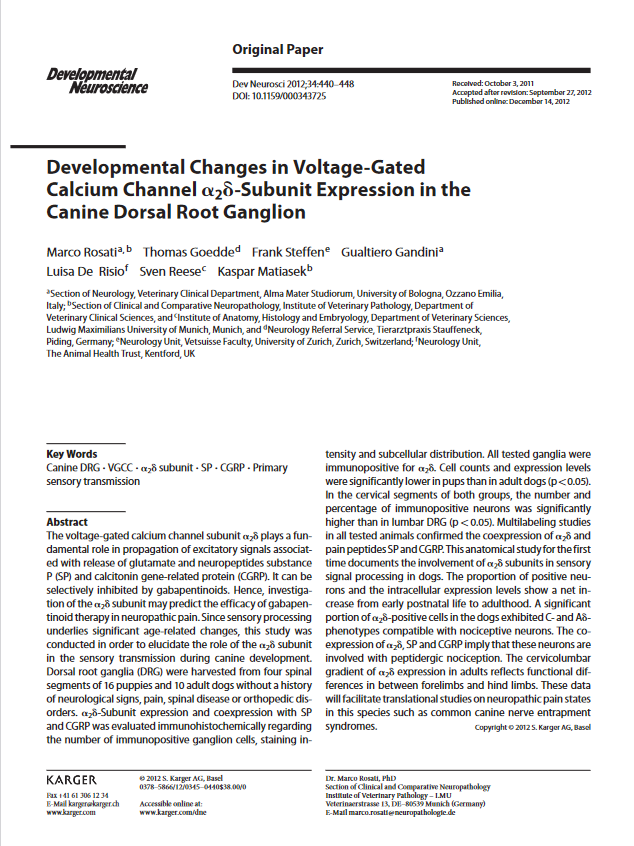17.06.2021
Developmental Changes in Voltage-Gated Calcium Channel alpha(2)delta-Subunit Expression in the Canine Dorsal Root Ganglion
Developmental Neuroscience, 2012
Abstract
The voltage-gated calcium channel subunit alpha(2)delta plays a fundamental role in propagation of excitatory signals associated with release of glutamate and neuropeptides substance P (SP) and calcitonin gene-related protein (CGRP). It can be selectively inhibited by gabapentinoids. Hence, investigation of the alpha(2)delta subunit may predict the efficacy of gabapentinoid therapy in neuropathic pain. Since sensory processing underlies significant age-related changes, this study was conducted in order to elucidate the role of the alpha(2)delta subunit in the sensory transmission during canine development. Dorsal root ganglia (DRG) were harvested from four spinal segments of 16 puppies and 10 adult dogs without a history of neurological signs, pain, spinal disease or orthopedic disorders. alpha(2)delta-Subunit expression and coexpression with SP and CGRP was evaluated immunohistochemically regarding the number of immunopositive ganglion cells, staining intensity and subcellular distribution. All tested ganglia were immunopositive for alpha(2)delta. Cell counts and expression levels were significantly lower in pups than in adult dogs (p < 0.05). In the cervical segments of both groups, the number and percentage of innmunopositive neurons was significantly higher than in lumbar DRG (p < 0.05). Multilabeling studies in all tested animals confirmed the coexpression of alpha(2)delta and pain peptides SP and CGRP. This anatomical study for the first time documents the involvement of alpha(2)delta subunits in sensory signal processing in dogs. The proportion of positive neurons and the intracellular expression levels show a net increase from early postnatal life to adulthood. A significant portion of alpha(2)delta-positive cells in the dogs exhibited C- and A delta-phenotypes compatible with nociceptive neurons. The coexpression of alpha(2)delta, SP and CGRP imply that these neurons are involved with peptidergic nociception. The cervicolumbar gradient of alpha(2)delta expression in adults reflects functional differences in between forelimbs and hind limbs. These data will facilitate translational studies on neuropathic pain states in this species such as common canine nerve entrapment syndromes. l
HistoGreen by Linaris, which has recently become a BIOZOL Company, is featured in this publication.


